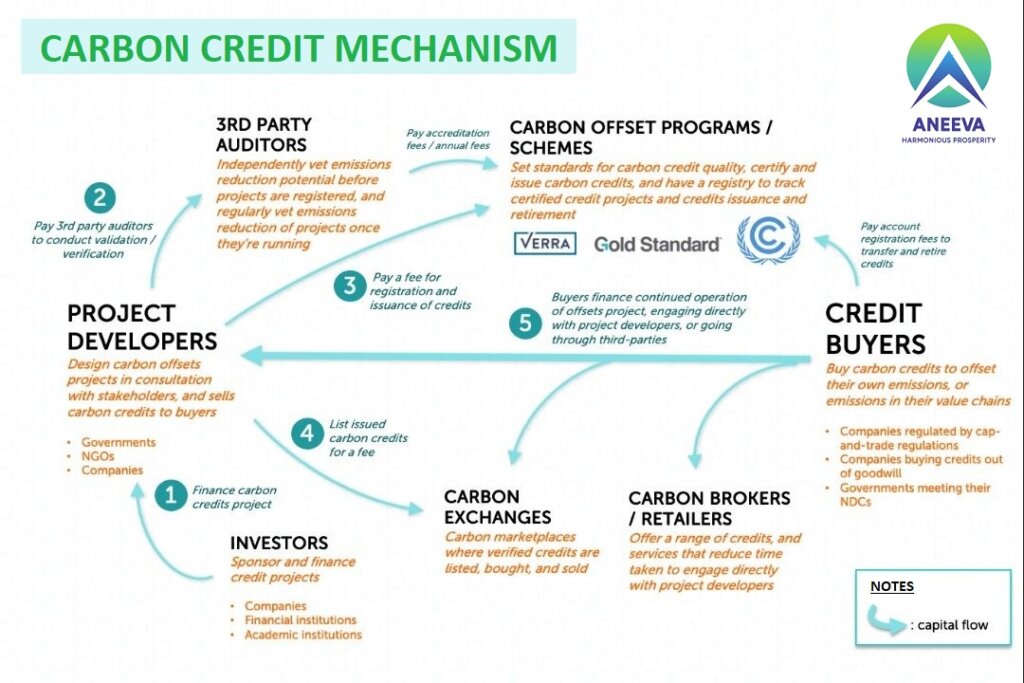In today’s world, addressing climate change and reducing greenhouse gas emissions is of paramount importance. Carbon credits are emerging as a critical tool in the fight against climate change, enabling businesses and individuals to take meaningful steps toward a more sustainable and eco-friendly future. This webpage will explore what are carbon credits, how they function, and their significance in mitigating climate change.
What Are Carbon Credits
Carbon credits, often referred to as carbon offsets, are a system devised to limit the release of greenhouse gases, primarily carbon dioxide (CO2), into the atmosphere. Each carbon credit represents one metric ton of CO2 emissions or the equivalent amount of other greenhouse gases. The primary objective of carbon credits is to incentivize carbon emissions reduction.
The Mechanics of Carbon Credits

Carbon credits operate on a straightforward principle: entities that successfully reduce their carbon emissions below a predetermined baseline are awarded carbon credits. These credits can then be traded or sold to other entities that need them to compensate for their emissions. The process can be broken down into several steps:
- Establishing a Baseline: A baseline is established as a reference point, representing the expected level of emissions without any emission reduction efforts. This baseline serves as the starting point for measuring emissions reductions.
- Emission Reduction Activities: Entities initiate various initiatives and practices to lower their carbon emissions. These efforts can encompass adopting renewable energy sources, enhancing energy efficiency, or investing in carbon capture and storage technologies.
- Carbon Credit Generation: As emissions decrease below the baseline, the entity earns carbon credits equivalent to the amount of emissions reduced. For instance, if a company successfully reduces emissions by 100 metric tons below its baseline, it earns 100 carbon credits.
- Verification and Certification: An impartial third-party organization verifies and certifies the validity of the emission reductions and the corresponding carbon credits earned. This process ensures transparency and accountability.
- Trading and Sale: These are tradable commodities and can be sold on carbon markets. Organizations striving to meet emission reduction targets can purchase these credits to offset their emissions and adhere to regulations or reduce their carbon footprint voluntarily.
The Importance of Carbon Credits
It plays a pivotal role in addressing climate change for several key reasons:
- Incentivizing Emission Reductions: It offers a financial incentive for entities to reduce their carbon emissions, encouraging them to adopt sustainable practices.
- Supporting Renewable Energy: The revenue generated from credits can be invested in renewable energy projects, promoting the transition to cleaner energy sources.
- Global Collaboration: Carbon credit facilitates international collaboration in combating climate change. They enable countries and businesses to work together on emission reduction efforts.
- Regulatory Compliance and Accountability: Carbon credit provides a framework for regulatory compliance and ensures accountability in emissions reduction endeavors.
- Promoting Innovation: The carbon credit system encourages innovation in technology and sustainable practices, ultimately driving more efficient emissions reduction.
Conclusion
Carbon credits play a crucial role in our fight against climate change. They provide a market-driven approach to reducing carbon emissions, promoting sustainable practices, and driving innovation in clean energy solutions. As we tackle the challenges of a warming planet, these credits serve as a powerful tool for building a greener and more sustainable future.
So, what are carbon credits? They are a step toward environmental responsibility, helping businesses and individuals offset their carbon footprint while contributing to a healthier planet.
Disclaimer: This webpage is for informational purposes only and does not constitute financial or legal advice. For specific guidance on carbon credit trading and emissions reduction strategies, please consult with qualified experts in the field.



